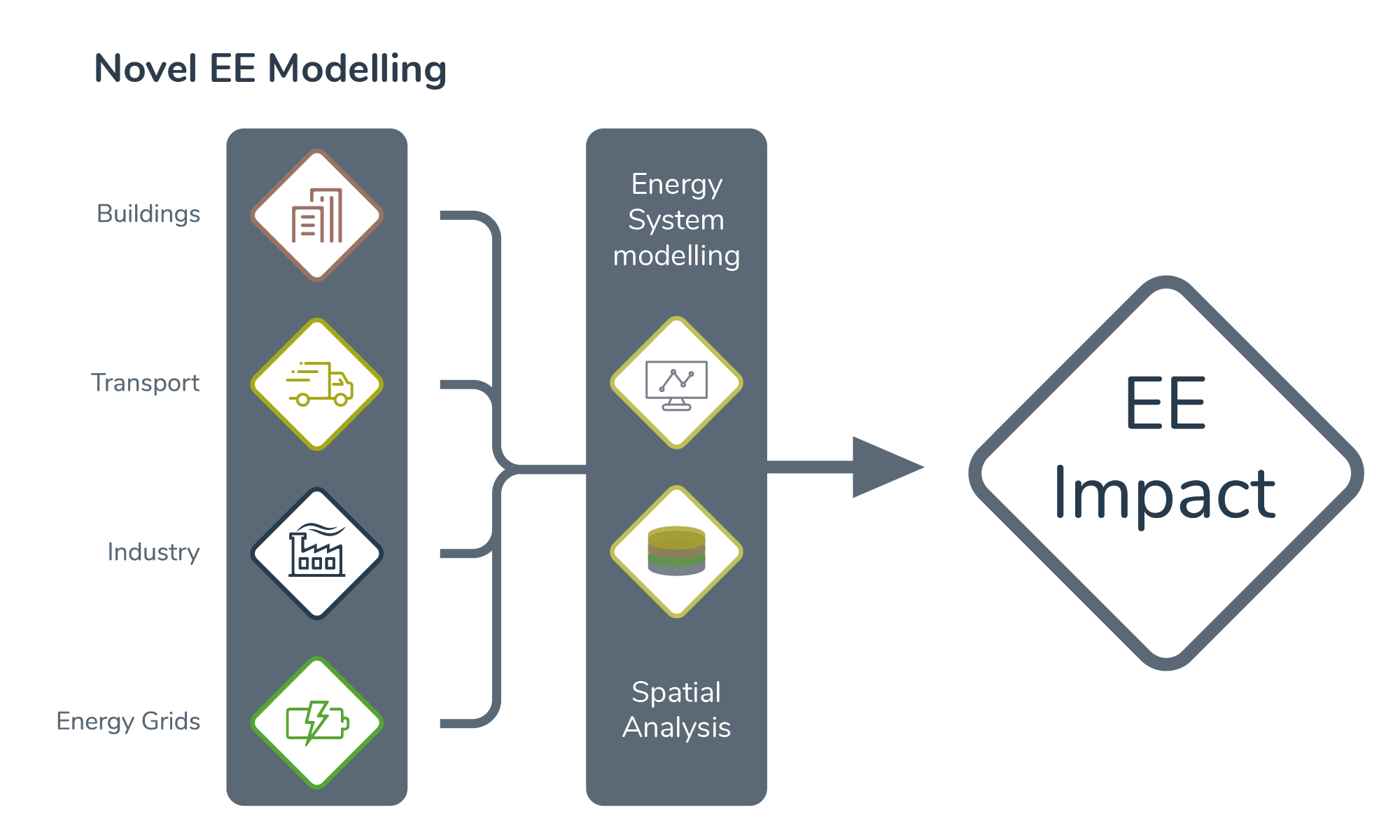The overall aim of sEEnergies is to quantify and operationalise the potentials for energy efficiency (EE) in buildings, transport and industry, combining this bottom-up knowledge with temporal and spatial analyses to develop an innovative, holistic and research-based EE-modelling approach going beyond current state-of-the-art science based knowledge and methodologies.
Changes in one energy sector can contribute to impacts in another sector, so it is only possible to have a comprehensive assessment and quantification of the EEFP policies impacts if we look at the energy systems from a holistic perspective and take into consideration the synergies between sectors.
Bottom-up sectorial approach and grid assessment, together with energy system modelling and spatial analytics is combined in the novel EE modelling approach.

sEEnergies comprises a combination of in-depth knowledge on the consumption side and in-depth analyses of the energy systems that enable a detailed scientifically based pool of knowledge needed to make EE potentials concrete and operational, and as a resource on its own.
Embedded in the applied project methodology is the identification of synergies across the supply chain and towards additional impacts not directly linked to the energy system. This nonenergy impacts can be very important benefits that are often invisible but which sEEnergies aims to operationalise to a larger extent on a sectoral, system and member state level.
For each sector we take as starting point the state-of-the-art including best practices, policies in place and energy and nonenergy impacts of EE, for the EU and for the 28 Member States.
See our first geographically visualized results by accessing the sEEnergies open data platform or by reading our reports.
Background
“Efficiency First is the fundamental principle around which the EU’s energy system should be designed. It means considering the potential value of investing in efficiency (including energy savings and demand response) in all decisions about energy system development – be that in homes, offices, industry or mobility.”
– Fundamental principle of the EU’s energy system, according to the European Climate Foundation the Energy Union EEFP –
Project Approach
The bottom-up approach used in this project has detailed analyses of EE matters in each sector as a starting point. As a consequence, besides providing a general overview of the EE potentials from an energy systems perspective, sEEnergies also provides advances on the state-of-the-art of the understanding of EEFP consequences for each sector. This enables policy makers and other target groups to easily find the results concerning the sector they are more interested on.






